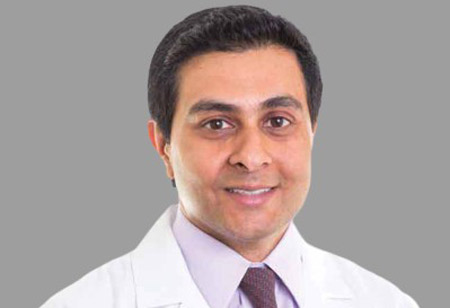Thank you for Subscribing to Healthcare Business Review Weekly Brief

Spinal Cord Stimulation (SCS): A Boon to Neuropathic Pain
Healthcare Business Review
The effective long-term treatment of chronic pain has long been a challenge for physicians. While there have been pharmacologic advances and an increase in medication choices available to treat the condition, medication management continues to be limited in efficacy as well as burdened with side effects. A particular type of pain, neuropathic pain, can be particularly challenging to treat, especially with our current choices of medications and procedures.
Neuropathic pain occurs after damage or insults to nerves themselves. A common example of this type of pain occurs as the result of disc herniation or degenerative changes in the spine which may compress nerves or the spinal cord, travelling within the spine. While surgery or other procedures such as spinal injections may be effective in treating some forms of this pain, other patients experience persistent and debilitating symptoms despite undergoing these more traditional treatments. Other conditions leading to neuropathic pain include diabetic peripheral neuropathy, complex regional pain syndromes, post-herpetic neuropathy (Shingles pain), chemotherapy-induced neuropathies, and peripheral nerve injuries. Nonetheless, regardless of the etiology behind neuropathic pain, recalcitrant cases often exist and can prove to be very challenging for physicians to control effectively.
Fortunately, over the past decade, a technology known as spinal cord stimulation (SCS) has undergone considerable advancements making it an effective treatment modality for this type of pain. The therapy was first used in 1967 to treat chronic pain after Melzak and Wall proposed the gate control theory of pain in 1965. While it is now known that this theory is an oversimplification of the pain pathways in the central nervous system, the theory proposed that stimulation of the dorsal horn (the gate) of the spinal cord with one type of signal (i.e., electrical spinal cord stimulation, or other stimulus) could block transmission of pain signals. With spinal cord stimulation, this is performed by placing small leads with multiple electrodes in the epidural space against the dorsal spinal cord. These leads are then connected to a small implantable battery/computer, which generates stimulation patterns.
As the technology of SCS has advanced over the years, it is become increasingly effective at controlling chronic pain, particularly neuropathic pain. In line with Moore’s law, the computerized pattern generation in these devices has seen exponential advances over the years with increasing computing power. Furthermore, many more vendors have entered the space and have spurred competition amongst each other. The nationwide opioid epidemic has added further impetus to advance the technology in order to control chronic pain. All of these factors have furthered both the efficacy as well as the usability of this technology. From an efficacy standpoint, the myriad of new algorithms, the adjustability, and automatization of parameters such as frequency, pulse width, and amplitude have enabled the technology to be far more effective. Increased computing power has also allowed new waveforms such as far higher frequencies and different patterns to be used in stimulation, making the technology far more personalized and effective for each particular pain pattern and distribution. As importantly, the long terms livability has been improved from the patient perspective has been improved as the need to recharge the device has been significantly decreased or eliminated, and the actual physical size of the implanted battery is a fraction of what it once was. Interfaces to control the device now employ technologies such as Bluetooth and are as user friendly as a smartphone.
“As the technology of scs has advanced over the years, it is become increasingly effective at controlling chronic pain, particularly neuropathic pain”
While the use of advancing technology in pain medicine may be most saliently evidenced through the example of spinal cord stimulation, the field has seen many other examples ranging from more advanced radio frequency ablation equipment to help deaden nerves which transmit pain signals to home health devices allowing remote medication monitoring as well as telehealth services. Although many physicians would have never envisioned such changes in the practice of medicine only a few years ago, these technologies, both disruptive as well as complementary, have allowed us to evolve the practice of medicine and better treat and care for our patients.









